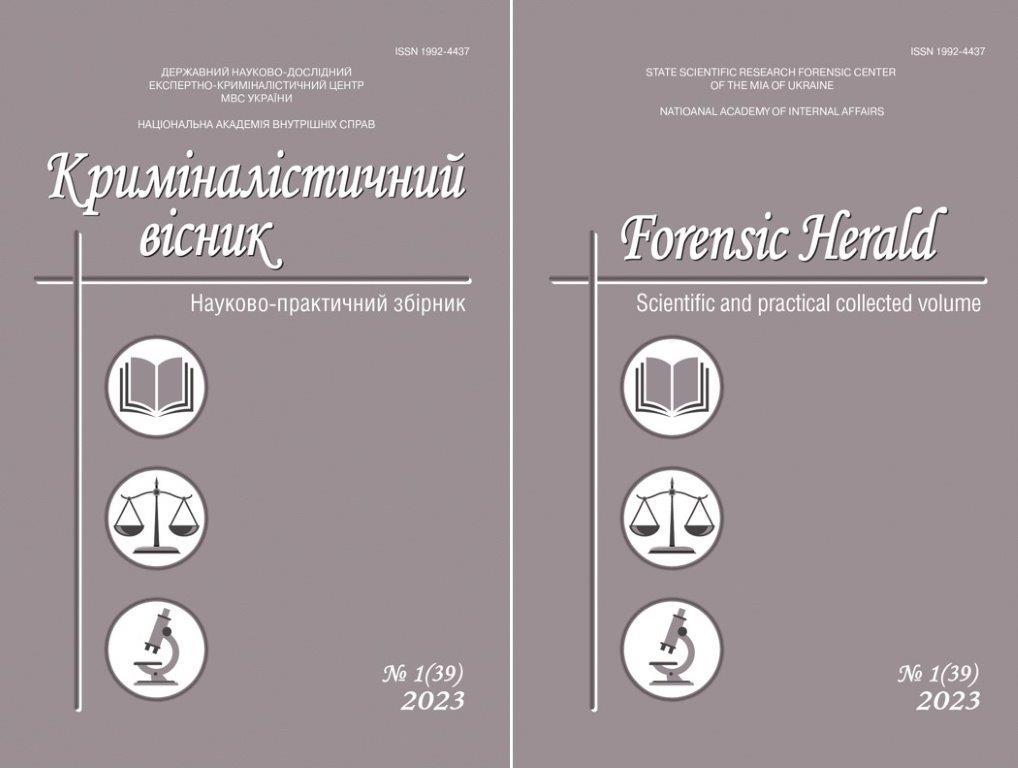FEATURES OF THE MECHANISM OF COMMITTING SEXUAL VIOLENCE IN THE TEMPORARY OCCUPIED TERRITORIES AND ITS INVESTIGATION
DOI:
https://doi.org/10.37025/1992-4437/2023-39-1-39Keywords:
sexual violence, criminal proceedings, temporarily occupied territories, the initial stage of the investigation, investigative situations, investigative (search) actions, expertiseAbstract
The purpose of the article is to determine the features of the forensic characteristics of rape and other sexual
crimes in the temporarily occupied territories, investigative situations and formulate recommendations for conducting
individual investigative (detective) actions, the use of special knowledge. Methodology. The methodological basis of
the article is general scientific and special methods of scientific knowledge. With their use, the norms of domestic
legislation on criminal offenses against sexual freedom and sexual inviolability of the individual have been studied.
The features of their application under martial law, the formation of the forensic characteristics of these criminal
offenses and the provisions for their investigation are also investigated. In particular, the following were used: analysis,
synthesis, comparative legal, historical and systemic structural methods. The scientific novelty lies in determining the
features of the investigation of sexual violence committed in the temporarily occupied territories. They are due, on the
one hand, to the mechanism of committing these crimes by combatants, and on the other hand, to a significant period
of time before the opening of criminal proceedings under martial law. Conclusions. The mechanism of committing
sexual violence by combatants in the temporarily occupied territories is characterized, which includes: features of the
subject of the crime, which is the Russian combatant; it acts to satisfy a sexual need, to humiliate Ukrainian women
as a sign of victory or a means of changing the gene pool, as well as a means of terror, intimidation, destruction of a
sense of human (national) dignity; the situation of sexual violence, characterized by the absence of law enforcement
agencies in Ukraine; as a result, an atmosphere of lawlessness and hopelessness is formed in the social environment,
giving rise among people to a sense of fear and obedience to the armed occupiers-rapists; victims, who are women and
underage girls, whose behavior is conditioned by fear of armed military occupiers that threaten their life and health;
brutal ways of committing sexual violence and sources of evidence, the features of which are due to the length of time
the commission of sexual violence, as well as a significant period of time between the commission of a crime and
the start of an investigation. The features of the opening of criminal proceedings on the grounds of sexual violence
committed in the temporarily occupied territories and the initial stage of the investigation are determined. They
are due to subjective (intimidation of the victims, their depression and unwillingness to make public) and objective
circumstances (displacement of the population under martial law, a significant period of time before the start of
the pre-trial investigation). Typical investigative situations are related to the filing of a complaint by the victim or
the discovery of the corpse of a victim of sexual violence. These factors determine the peculiarities of the tactics of
conducting investigative (detective) actions: inspection; interrogation of the injured person and witnesses; carrying
out examinations; search and identification of the suspect. Their task is to obtain evidence of sexual violence that
serves as a basis for prosecution, no matter where the war criminals hide.



